Basket Flower
- March 13, 2024
- 0 comment
The Basket Flower, scientifically known as Centaurea americana, is a striking wildflower that belongs to the Asteraceae family. This plant is renowned for its captivating appearance and ecological significance. It is a 1-1/2 to 6 ft. tall annual with a stout, leafy, much-branched stem
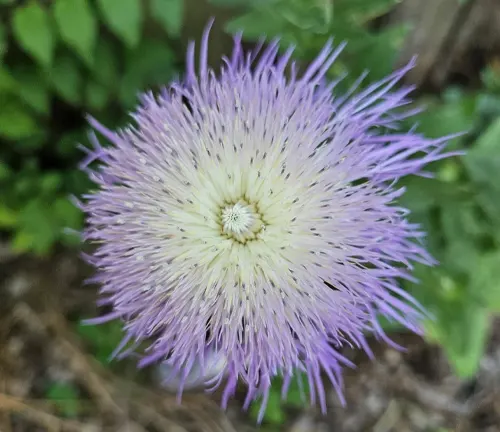

The flowers are 4-5 in. wide and are subtended by fringed bracts. The plant has a sweet, honey fragrance and is used in native plant landscaping. It is a pollinator favorite and attracts butterflies and birds. The flowers are typically pinkish lavender with creamy centers and can be used as cut or dried flowers
| Characteristics | Description |
| Scientific Name | Centaurea Americana |
| Common Names | Basket Flower, American Starthistle |
| Family | Asteraceae |
| Native Region | North America |
| Plant Type | Perennial |
| Size | Can reach a height of 3 to 4 feet |
| Leaves | Narrow, lance-shaped, and deeply lobed |
| Flowers | Large, thistle-like, lavender-pink blossoms |
| Propagation | Mainly through seeds |
| Drought Tolerance | High drought tolerance, making it suitable for xeriscaping |
| Cultural Uses | Historically used for medicinal purposes and as an ornamental plant |
| Ecological Role | Serves as a nectar source for pollinators such as bees and butterflies |
| Notable Species | While Centaurea americana is a species in itself, the Centaurea genus comprises several notable species, each with unique characteristics |
| Hardiness Zones | 3-9 |
| Growth Rate | Moderate to fast, depending on conditions |
| Lifespan | Annual, completing its life cycle within a year |
Botanical Beauty of “Basket Flower ”
The Basket Flower’s distinctive thistle-like blossoms make it a captivating addition to any natural landscape or garden. Its elegant, intricate blooms are a sight to behold, adding a touch of natural beauty to any setting.
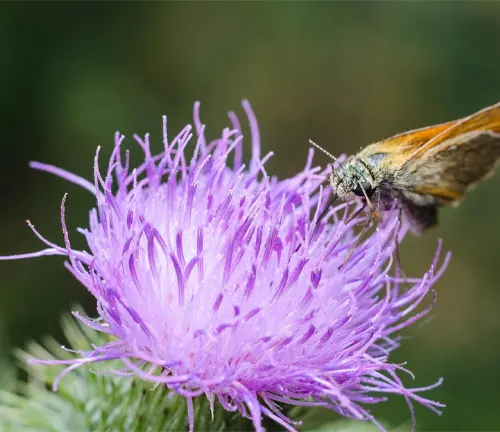

Woodland Elegance
In its native habitats, the Basket Flower, scientifically known as Centaurea americana, exudes a sense of woodland elegance as it adorns open meadows, prairies, and woodland edges with its enchanting presence. This wildflower’s natural beauty and grace add a touch of charm to these landscapes, creating a picturesque scene that captures the essence of nature’s elegance. With its delicate yet striking appearance, the Basket Flower effortlessly enhances the tranquility and beauty of its surroundings, making it a beloved feature in woodland settings.
Ecological Importance
Basket Flower serves as a vital component of its native ecosystems, providing nectar and pollen for bees, butterflies, and other pollinators. Its presence supports the overall health and balance of the local flora and fauna.
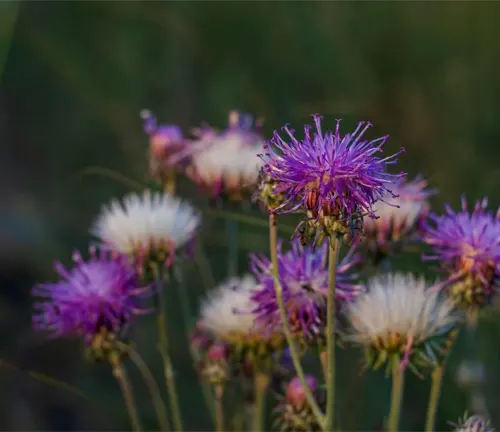

Cultivation and Conservation
Efforts to cultivate and conserve Basket Flower are essential to maintaining its presence in the wild and cultivated landscapes. By promoting its growth and protecting its natural habitats, conservationists can ensure the continued survival of this remarkable plant.
Fragrance
Although Basket Flower may not be renowned for its fragrance, its visual allure and ecological significance make it a valuable asset in any natural environment. While some flowers are prized for their scents, Basket Flower stands out with its captivating appearance and the essential role it plays in supporting local ecosystems.
Its striking thistle-like blossoms attract pollinators like bees and butterflies, aiding in the pollination of various plant species and contributing to the overall health of the ecosystem. Even without a strong fragrance, the beauty of Basket Flower shines through, enhancing the aesthetic appeal of gardens, meadows, and woodland edges.
Its intricate blooms add a touch of elegance to any landscape, creating a visually pleasing display that can be enjoyed by both humans and wildlife alike. So, while it may not fill the air with perfume, the Basket Flower’s charm and ecological contributions make it a valuable and worthwhile addition to natural settings.
Soil Stabilization
The Basket Flower, scientifically known as Centaurea americana, boasts a robust root system that plays a crucial role in soil stabilization. This makes it an invaluable asset in landscapes where erosion control is necessary. By strengthening the soil structure, Basket Flower helps prevent soil erosion, which is particularly beneficial in areas prone to landslides or where soil erosion can lead to environmental degradation.
Aside from its role in soil stabilization, Basket Flower also contributes to the overall health and balance of the ecosystem. Its presence supports the growth of other plants, creating a diverse and thriving environment. Additionally, the plant’s ability to attract pollinators like bees and butterflies aids in the reproduction of various plant species, further promoting biodiversity and sustainability in the ecosystem.
Common Uses
The Basket Flower is highly prized for its ornamental value in gardens, where it brings a touch of wild beauty to cultivated spaces. Its striking thistle-like blossoms and intricate blooms make it a popular choice for adding a natural and enchanting element to garden landscapes. Whether planted in flower beds, borders, or wildflower meadows, the Basket Flower’s unique appearance adds a charming and picturesque quality to any garden setting.
The Basket Flower’s versatility extends beyond gardens; its flowers can be used as cut or dried flowers, making them a lovely addition to floral arrangements and crafts. This dual-purpose nature of the plant enhances its appeal for both gardeners and flower enthusiasts, showcasing its beauty not only in outdoor settings but also indoors as part of creative floral displays.
Benefits
The Basket Flower offers a range of benefits that make it a valuable addition to any landscape. Firstly, its ability to attract pollinators like bees and butterflies is essential for the pollination of plants, promoting biodiversity and supporting the ecosystem’s health.
Secondly, the plant’s striking appearance adds visual interest to both natural and cultivated landscapes, enhancing the overall aesthetic appeal of gardens, meadows, and woodland edges.
Lastly, the Basket Flower’s robust root system contributes to soil stability and erosion control, making it a practical choice for areas prone to erosion, helping to prevent soil loss and maintain the integrity of the land.
By combining ecological significance with ornamental beauty and practical benefits like soil stabilization, the Basket Flower emerges as a versatile and valuable plant for various environments. Its role in supporting pollinators, enhancing visual appeal, and aiding in soil stability underscores its importance in creating sustainable and visually appealing landscapes that benefit both wildlife and humans alike.
Different Species
Centaurea cyanus
(Cornflower or Bachelor’s Button)
Known for its bright blue flowers, Centaurea cyanus is a popular annual plant that adds a splash of color to gardens. It typically grows to about 16 to 35 inches tall and blooms in late spring to summer.


Centaurea Montana
(Mountain Bluet or Perennial Cornflower)
This perennial species is native to Europe and known for its vivid blue flowers. It grows up to 24 inches tall and prefers well-drained soil in full sun to partial shade.
Centaurea nigra (Common Knapweed or Black Knapweed)
A tough perennial that produces purple flower heads, it is native to Europe but has become widespread in North America. It grows up to 35 inches tall and is tolerant of a wide range of soil types.
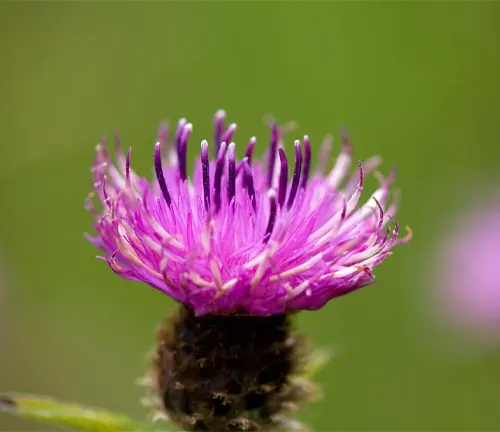
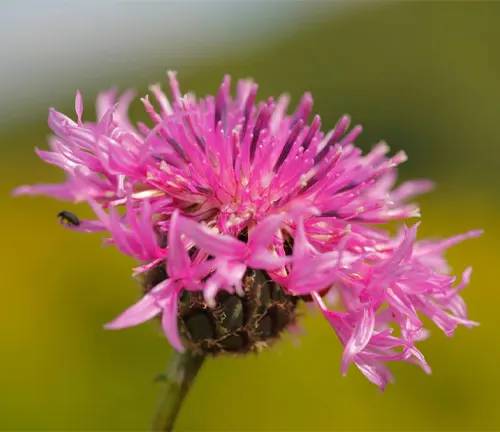
Centaurea scabiosa (Greater Knapweed)
Larger than its cousin, the Common Knapweed, it features deep purple flowers and can grow up to 39 inches tall. It’s a perennial plant favored for its robust nature and attractiveness to pollinators.
Centaurea solstitialis (Yellow Star-thistle)
This annual species is known for its yellow flower heads and spiny appearance. It can grow up to 5 feet tall and is considered invasive in some regions.
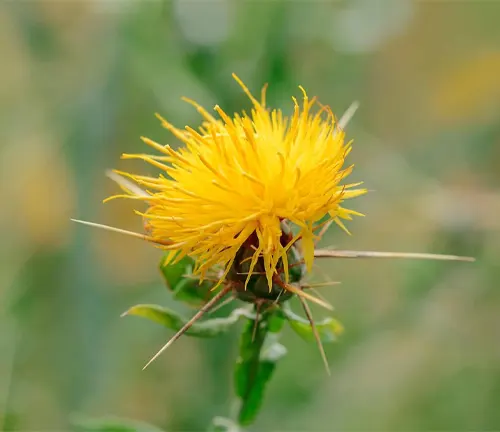
Frequently Asked Questions (FAQs)
1. What is the scientific name of the Basket Flower?
The Basket Flower is scientifically known as Centaurea americana, belonging to the Asteraceae family. This name reflects its distinctive characteristics and lineage within the plant kingdom.
2. How tall can Basket Flower plants grow?
Basket Flower plants can vary significantly in height, ranging from 1-1/2 to 6 ft. tall. Their size depends on environmental conditions and care, with a stout, leafy, much-branched stem supporting their growth.
3. What does the Basket Flower look like?
The Basket Flower boasts 4-5 in. wide flowers, characterized by fringed bracts that resemble a woven basket. These blossoms are typically pinkish lavender with creamy centers and emit a sweet, honey fragrance.
4. Where is the Basket Flower native to?
Originally from North America, the Basket Flower thrives in open meadows, prairies, and woodland edges across the continent, showcasing its natural beauty and adaptability to various landscapes.
5. How does the Basket Flower benefit the ecosystem?
Serving as a nectar source, the Basket Flower plays a crucial role in supporting pollinators like bees and butterflies. Its ecological importance extends to promoting biodiversity and sustaining the health of local flora and fauna.
6. Can Basket Flower be used for medicinal purposes?
Historically, the Basket Flower has been used for medicinal purposes, although specific applications vary. Its main value today lies in its ornamental and ecological contributions.
7. What makes the Basket Flower a good choice for xeriscaping?
With high drought tolerance, the Basket Flower is ideal for xeriscaping, requiring minimal water once established. This trait makes it suitable for sustainable gardening practices and landscapes prone to dry conditions.
8. How is Basket Flower propagated?
Propagation of the Basket Flower is mainly achieved through seeds. The plant completes its life cycle within a year, making seed collection and sowing a straightforward process for gardeners.
9. What are some common uses for Basket Flower?
Beyond its ecological role, the Basket Flower is valued for its ornamental beauty in gardens and as cut or dried flowers in arrangements. Its unique appearance and fragrance add a natural charm to various settings.
10. Are there different species within the Centaurea genus?
Yes, the Centaurea genus includes several notable species, each with unique characteristics. Examples include Cornflower (Centaurea cyanus), Mountain Bluet (Centaurea montana), and Common Knapweed (Centaurea nigra), showcasing the genus’s diversity and adaptability.



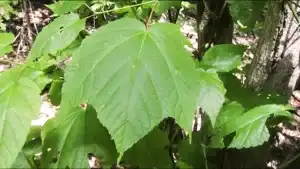
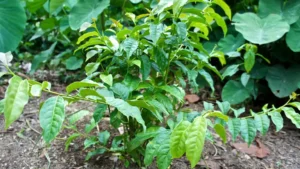


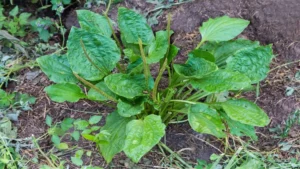



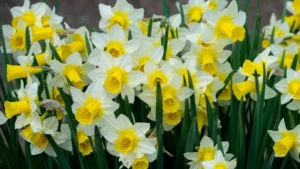
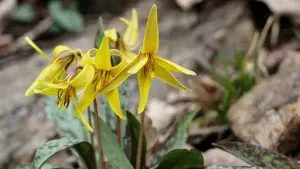

Leave your comment